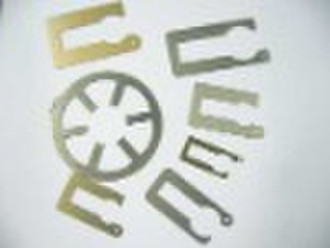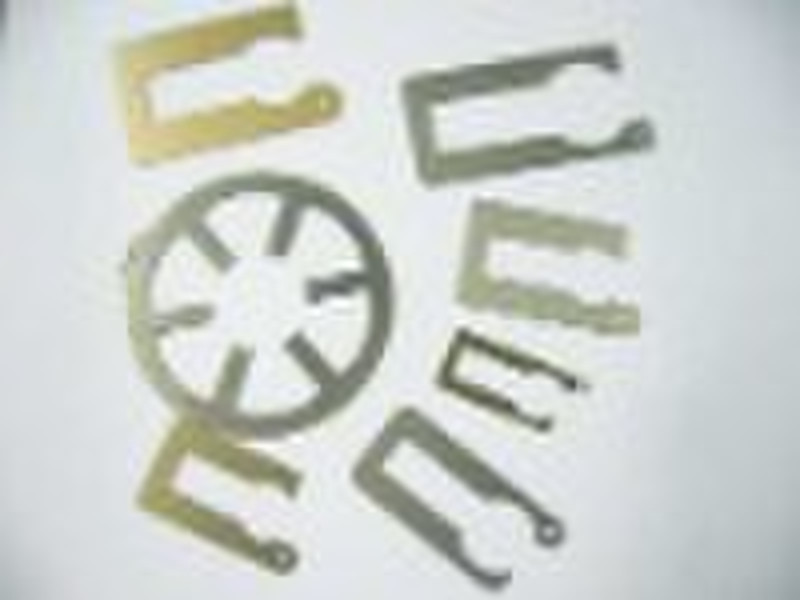Katalog
-
Katalog
- Auto & Motorrad
- Bauwesen und Immobilien
- Bekleidung
- Büro- und Schulartikel
- Chemikalien
- Dienstleistungen für Unternehmen
- Eisenwaren
- Elektrische Geräte & Zubehöre
- Elektronische Bauteile
- Energie
- Galanteriewaren
- Geschenke und Kunsthandwerke
- Gesundheit und Medizin
- Gummi und Kunststoffe
- Haus und Garten
- Haushaltsgeräte
- Koffer, Taschen & Hüllen
- Landwirtschaft
- Lebensmittel und Getränke
- Licht und Beleuchtung
- Maschinen, Geräte und Werkzeuge
- Maschinenteile und Herstellung Dienstleistungen
- Messapparat und Analysegerät
- Mineralien und Metallurgie
- Möbel
- Schuhe und Accessoires
- Schönheit und Körperpflege
- Service Geräte und -Ausstattung
- Sicherheit und Schutz
- Spielzeuge und Hobbys
- Sport und Unterhaltung
- Telekommunikations
- Textil und Lederware
- Transport
- Uhren, Schmuck, Brillen
- Umweltschutz
- Unterhaltungselektronik
- Verpacken und Drucken
- Werkzeuge
- Überschüssiger Warenbestand, Lager
Filters
Search
Metal Stamping Teil
original-Preis: 0,01 USD
Ningbo, China
Produktionskapazität:
200 Tonne / Monat

Danne Lee
Kontaktperson
Basisdaten
Stamping Part(CNC Part) 1.Material:Carbon steel(also Aluminium, Stainless Steel,Brass,other metal ) 2.Brand:OEM 3.Size:As request 4.Production Processing:Stamping 5.Surface:Zp,Hdg,Yzp,Black,Plain,Chromed,Polish, Brush and etc 6.Quality: Approved and assured 7.Machine:CNC, Stamping machine,Drawing machine,Welding machine,Bending machine,Shearing machineetc 8.Mould: We open by ourself 9.Usage Scope:Car industrial, machine, sailing, road,air industrial,dairy product etc 10.Packing:General carton packing,pallet packing and small box packed 11.Delivery time:20-30days after confirmation of order or receipt of depoist 12.Payment term:T/T or L/C A.General Introduction: Stamping includes a variety of sheet-metal forming manufacturing processes, such as punching using a machine press or stamping press, blanking, embossing, bending, flanging, and coining.[This could be a single stage operation where every stroke of the press produce the desired form on the sheet metal part, or could occur through a series of stages. The process is usually carried out on sheet metal, but can also be used on other materials, such as polystyrene. B.Operation: a.Bendingis a manufacturing process that produces a V-shape, U-shape, or channel shape along a straight axis in ductile materials, most commonly sheet metal.Commonly used equipment include box and pan brakes, brake presses, and other specialized machine presses. Typical products that are made like this are boxes such as electrical enclosures and rectangular ductwork. b.Blanking and piercing are shearing processes in which a punch and die are used to modify webs. The tooling and processes are the same between the two, only the terminology is different: in blanking the punched out piece is used and called a blank; in piercing the punched out piece is scrap. c.Coining is a form of precision stamping in which a workpiece is subjected to a sufficiently high stress to induce plastic flow on the surface of the material. A beneficial feature is that in some metals, the plastic flow reduces surface grains size, work hardening the surface, while the material deeper in the part retains its toughness and ductility. The term comes from the initial use of the process: manufacturing of coins.Coining is used to manufacture parts for all industries and is commonly used when high relief or very fine features are required. For example, it is used to produce money (coins), medals, badges, buttons, precision-energy springs and precision parts with small or polished surface features.Coining is a cold working process (similar to forging which takes place at elevated temperature) that uses a great deal of force to plastically deform a workpiece, so it conforms to a die. Coining can be done using a gear driven press, a mechanical press, or more commonly, a hydraulically actuated press. Coining typically requires higher tonnage presses than stamping, because the workpiece is plastically deformed and not actually cut, as in some other forms of stamping. d.Drawing is a metalworking process which uses tensile forces to stretch metal. It is broken up into two types: sheet metal drawing and wire, bar, and tube drawing. The specific definition for sheet metal drawing is that it involves plastic deformation over a curved axis. For wire, bar, and tube drawing the starting stock is drawn through a die to reduce its diameter and increase its length. Drawing is usually done at room temperature, thus classified a cold working process, however it may be performed at elevated temperatures to hot work large wires, rods or hollow sections in order to reduce forces. e.Repoussageis a metalworking technique in which a malleable metal is ornamented or shaped by hammering from the reverse side. There are few techniques that offer such diversity of expression while still being relatively economical. Chasing is the opposite technique to repoussé, and the two are used in conjunction to create a finished piece. It is also known as embossing. While repoussé is used to work on the reverse of the metal to form a raised design on the front, chasing is used to refine the design on the front of the work by sinking the metal. The term chasing is derived from the noun "chase", which refers to a groove, furrow, channel or indentation. The adjectival form is "chased work". f.Forming Metalworking is the process of working with metals to create individual parts, assemblies, or large scale structures. The term covers a wide range of work from large ships and bridges to precise engine parts and delicate jewelry. It therefore includes a correspondingly wide range of skills, processes, and tools. Metalworking is a science, art, hobby, industry and trade. Its historical roots span cultures, civilizations, and millennia. Metalworking has evolved from the discovery of smelting various ores, producing malleable and ductile metal useful for tools and adornments. Modern metalworking processes, though diverse and specialized, can be categorized as forming, cutting or joining processes. Today's machine shop includes a number of machine tools capable of creating a precise, useful workpiece. g.Piercing Blanking and piercing are shearing processes in which a punch and die are used to modify webs. The tooling and processes are the same between the two, only the terminology is different: in blanking the punched out piece is used and called a blank; in piercing the punched out piece is scrapBlanking and piercing are shearing processes in which a punch and die are used to modify webs. The tooling and processes are the same between the two, only the terminology is different: in blanking the punched out piece is used and called a blank; in piercing the punched out piece is scrap. h. Progressive stamping is a metalworking method that can encompass punching, coining, bending and several other ways of modifying metal raw material, combined with an automatic feeding system. The feeding system pushes a strip of metal (as it unrolls from a coil) through all of the stations of a progressive stamping die. Each station performs one or more operations until a finished part is made. The final station is a cutoff operation, which separates the finished part from the carrying web. The carrying web, along with metal that is punched away in previous operations, is treated as scrap metal. We are a factory and exporter of different stamping parts, and making per customer's drawing or sample. The quality we assured,andaiming to"adhere to sincerity, apply scientific management, offer top-grade products, and render world-class service", the company rolls out the red carpet for all customers that visit us for business talks.
Lieferbedingungen und Verpackung
Packaging Detail: 1.pcs/carton then into pallet, around 800kgs/pallet2.pcs/small box+carton, then into pallet Delivery Detail: 30days after receipt of T/Tor L/C
Hafen: Ningbo or Shanghai
Zahlungsbedingungen
Letter of credit
Telegraphic transfer
MoneyGram
Western Union
-
Zahlungsarten
Wir akzeptieren:









